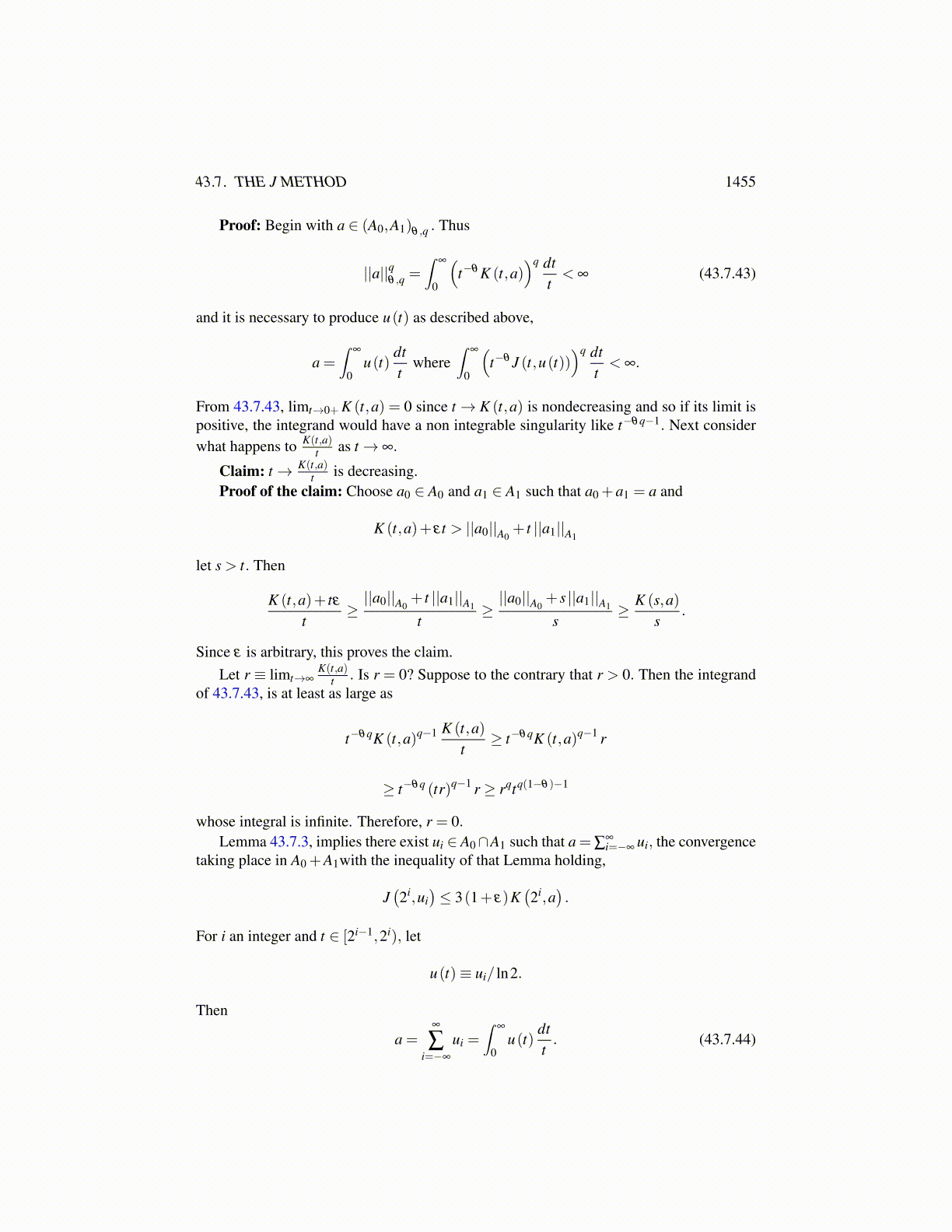
43.7. THE J METHOD 1455
Lemma 43.7.2 Suppose a ∈ (A0,A1)θ ,q,J and a =∫
∞
0 u(t) dtt where u is described above.
Then letting r > 1,
ur (t)≡{
u(t) if t ∈( 1
r ,r)
0 otherwise.
it follows that ∫∞
0ur (t)
dtt∈ A0∩A1.
Proof: The integral equals∫ r
1/r u(t) dtt .∫ r
1/r1t dt = 2lnr < ∞. Now ur is measurable in
A0 ∩A1 and bounded. Therefore, there exists a sequence of measurable simple functions,{sn} having values in A0 ∩A1 which converges pointwise and uniformly to ur. It can alsobe assumed J (r,sn (t))≤ J (r,ur (t)) for all t ∈ [1/r,r]. Therefore,
limn,m→∞
∫ r
1/rJ (r,sm− sn)
dtt= 0.
It follows from the definition of the Bochner integral that
limn→∞
∫ r
1/rsn
dtt=∫ r
1/rur
dtt∈ A0∩A1.
This proves the lemma.The remarkable thing is that the two spaces, (A0,A1)θ ,q and (A0,A1)θ ,q,J coincide and
have equivalent norms. The following important lemma, called the fundamental lemma ofinterpolation theory in [16] is used to prove this. This lemma is really incredible.
Lemma 43.7.3 Suppose for a ∈ A0 +A1, limt→0+ K (t,a) = 0 and limt→∞K(t,a)
t = 0. Thenfor any ε > 0, there is a representation,
a =∞
∑i=−∞
ui = limn,m→∞
n
∑i=−m
ui, ui ∈ A0∩A1, (43.7.39)
the convergences taking place in A0 +A1, such that
J(2i,ui
)≤ 3(1+ ε)K
(2i,a
). (43.7.40)
Proof: For each i, there exist a0,i ∈ A0 and a1,i ∈ A1 such that
a = a0,i +a1,i,
and(1+ ε)K
(2i,a
)≥ ||a0,i||A0
+2i ||a1,i||A1. (43.7.41)
This follows directly from the definition of K (t,a) . From the assumed limit conditions onK (t,a) ,
limi→∞||a1,i||A1
= 0, limi→−∞
||a0,i||A0= 0. (43.7.42)